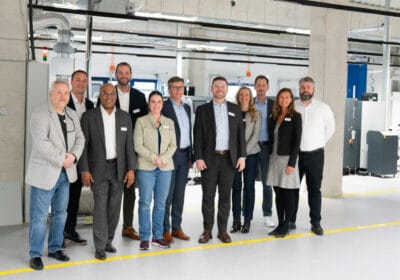It’s no secret that companies who adopt emerging technology have the competitive advantage over those who don’t. From Henry Ford’s adoption of the automated assembly line to Blockbuster Video’s ultimate death by resistance to change, we see examples of this across every industry. Companies’ reluctance to keep up with changing business models will in the end severely impact their bottom lines. And there is no greater example of this than today’s advances like the Industrial Internet of Things (IIoT) and industry 4.0, which bring with them smart machines that are capable of seamless and intuitive communication.
In fact, today’s technological advances put the industrial industry on the edge of a transformative period especially as the number of these IIoT devices continues to rise. Manufacturers who take the leap by fully embracing this new technology will become the industry’s next success stories.
Using automation to address workforce challenges
It’s important to remember that implementing automated processes doesn’t mean replacing your valued employees. Rather, it’s about discovering ways to address workforce challenges and finding new ways for your employees to be more efficient. Additionally, it is more so about giving these workers more time to be productive on other tasks that require a personal touch. Tasks that were once focused on collecting and analysing data manually can now be automated to analyse data in real time. For example, wireless monitoring and analytics technologies can be integrated to automatically collect data and perform predictive maintenance analysis to anticipate any issues before they arise. In the long run, this reduces traditional maintenance time and dollars, while performing the same tasks faster and more efficiently.
What’s more, IIoT and automation can significantly improve the onboarding process such that new employees can be brought up to speed in a few weeks, as opposed to several months or even years. Organisations who are heavily investing in automated technology for data collection/monitoring and analysis are giving these new employees the opportunity to absorb a breadth of skills and improve productivity as well.
Implementing IIoT to accelerate automation
So how can your company actually go about putting IIoT technology into effect across the organisation to better enable its automation and gain that competitive advantage? Your operations are not alone – in fact, almost every company is facing the same challenges in figuring this process out. In order to simplify the transition to digitisation, you need to embrace the trends of the future instead of shying away from them. It’s important to truly modernise your digital infrastructure to reap the true benefits of IIoT and automation – which means taking a look at potential vulnerabilities in legacy infrastructure and having operational technology (OT) and IT teams working together to update the digital environments to be simple and resilient.
As automated technologies like predictive analytics and monitoring systems advance further, we’re going to see even more opportunities to address challenges (like those in the industrial workforce) and adapt. Those companies that take the leap towards implementing these technologies and taking advantage of new advanced analytics capabilities are going to be the most set up for success and rapid growth.






